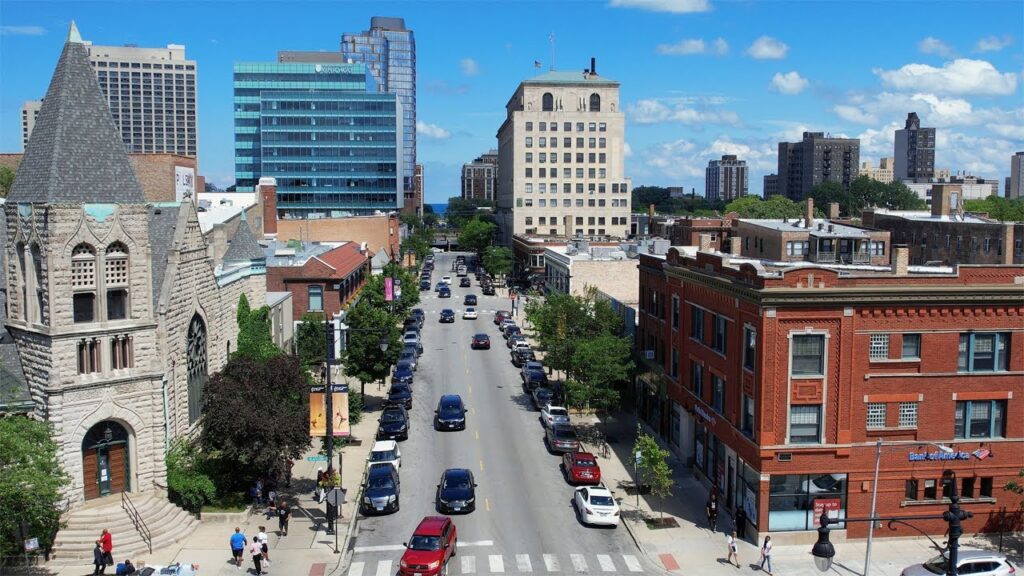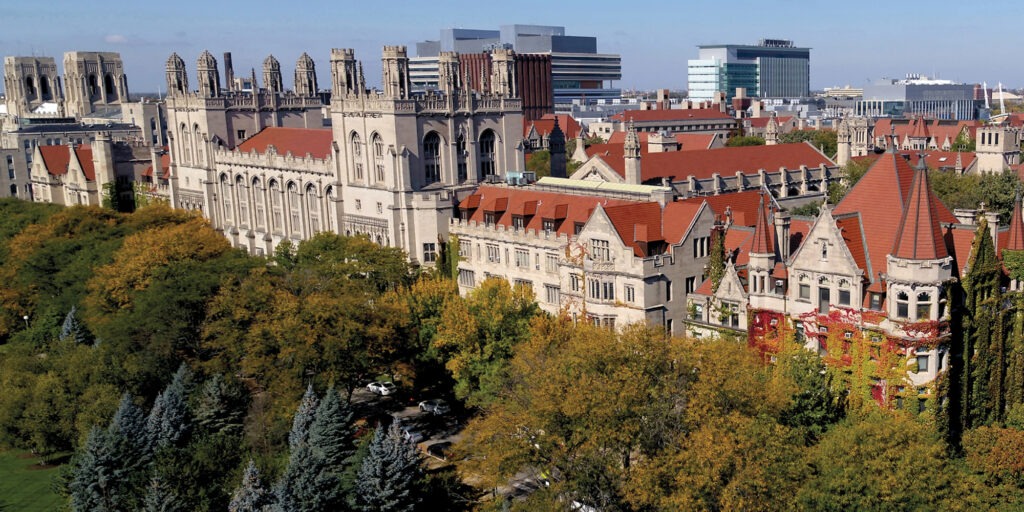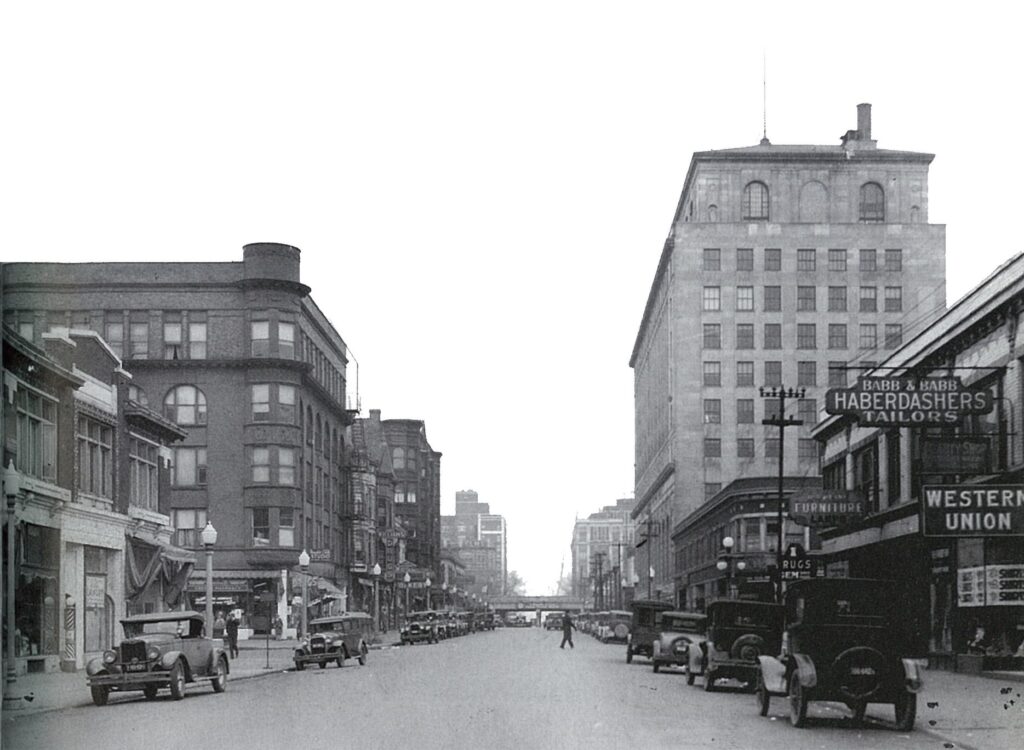
Hyde Park, a Chicago neighborhood, is located to the south of the Loop and near the shore of Lake Michigan. Its boundaries are defined by 51st Street/Hyde Park Boulevard on the north, the Midway Plaisance (59th and 60th streets) on the south, Washington Park on the west, and Lake Michigan on the east. Additionally, a section of the Kenwood community area between 47th Street and 51st Street/Hyde Park Boulevard may also be included as part of Hyde Park. This combined region of Hyde Park and southern Kenwood is sometimes referred to as Hyde Park-Kenwood, and includes the neighborhoods of East Hyde Park and Indian Village.
Hyde Park is the site of a variety of institutions of higher education, such as the University of Chicago, the Catholic Theological Union, the Lutheran School of Theology at Chicago, and the McCormick Theological Seminary. Additionally, it is the home of the Museum of Science and Industry as well as two of the four historic sites listed in the original 1966 National Register of Historic Places (Chicago Pile-1 and Robie House). The area became widely known in the early 21st century due to its connection with U.S. President Barack Obama, who was a Senior Lecturer for twelve years at the University of Chicago Law School. The Barack Obama Presidential Center in Jackson Park is also located in the vicinity.
Paul Cornell, a relative of the founder of Cornell University, bought 300 acres of land situated between 51st and 55th streets near Lake Michigan in 1853. His intention was to attract other affluent Chicagoans and their families to the area. The locale was seven miles away from the downtown area of the city and was known to be cooler in the summer and warmer in the winter due to the moderating effect of the lake.
Cornell managed to secure a piece of land close to the Illinois Central Railroad, which had been built two years previously, in exchange for a railroad station at 53rd Street. Consequently, Hyde Park became a suburban haven for many of the privileged citizens of Chicago looking for a way to get away from the hustle and bustle of the quickly expanding city.

In 1857, a luxurious hotel named Hyde Park House was constructed near the 53rd Street train station along the banks of Lake Michigan. This establishment served as a hub of social interaction and hospitality in Hyde Park region for two decades, drawing in many distinguished guests, such as Mary Todd Lincoln who stayed there with her children for two and a half months in 1865 (following her husband’s assassination). Regrettably, the Hyde Park House was destroyed by flames in 1879. Subsequently, the Sisson Hotel was erected on the same site in 1918 and was eventually transformed into a condominium building known as the Hampton House.
In 1861, the area that is now known as the South Side of Chicago was given the name Hyde Park Township. The boundaries of this township were Pershing Road on the north, 138th Street on the south, State Street on the west, and Lake Michigan and the Indiana state line on the east. However, Hyde Park Township was not officially annexed to Chicago until 1889. After it was annexed, the definition of Hyde Park as a Chicago neighborhood was narrowed down to the area that was initially developed by Cornell, which is near the lakefront and located between 51st and 55th streets.
Two years after it was annexed to the city of Chicago in 1891, Hyde Park was the site of the University of Chicago’s founding, which was enabled by the generosity of John D. Rockefeller and the supervision of William Rainey Harper. In 1893, the neighborhood attracted global attention from the World’s Columbian Exposition, a world’s fair to commemorate Christopher Columbus’ discovery of the New World. This fame enticed new residents and caused the area to become more urbanized. The only vestige of the expo that still stands today is the Palace of Fine Arts, which was designed by Charles Atwood and is now the Museum of Science and Industry.
At the beginning of the 20th century, a range of luxurious hotels were built in Hyde Park, especially along the lakeshore. During this period, Hyde Park was transformed into a popular resort destination in Chicago. However, most of these hotels shut down during the Great Depression and were changed into apartment and condominium structures that remain standing to this day.
University of Chicago

The University of Chicago’s main campus, which houses the Pritzker School of Medicine, the University Hospital, the Main Quadrangles and the Booth School of Business, is bordered by Washington Park to the west, 55th Street to the north, University Avenue to the east, and 61st Street to the south, and thus most of the university is located in the southwestern quadrant of the area, with the remainder being in Woodlawn, south of the Midway. The University also owns a few other properties in Hyde Park, mainly along 59th Street between the main campus and the Metra tracks, such as the University of Chicago Laboratory Schools and International House. The blocks east of the central campus are mainly occupied by student and faculty residences, due to the university’s close proximity.
East Hyde Park
The east area of Hyde Park, close to Lake Michigan, is recognized as East Hyde Park. This area is distinct from the remainder of the neighborhood, due to the large quantity of high-rise condos there, with a great number of them taking in the lakefront view. In comparison, the majority of dwellings in the other part of Hyde Park are three-story apartments or single-family homes, with only a few high-rise condos.

South Kenwood
The area bounded by 47th Street in the north, 51st Street in the south, Cottage Grove Avenue in the west, and Lake Michigan in the east is part of the Kenwood community, but is often referred to as Hyde Park due to the shared culture and history. Although the two districts have some similarities, there is a distinct difference in the architecture: Hyde Park is primarily composed of three and four-story apartments and family homes, while Kenwood is known for its luxurious mansions, which were built by wealthy Chicagoans in the late nineteenth and early twentieth centuries. Notable residents of this area include Barack Obama, Louis Farrakhan, Muhammad Ali, and Elijah Muhammad.

